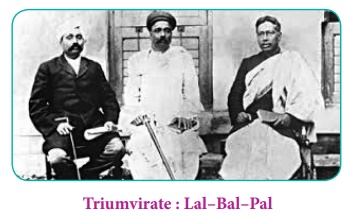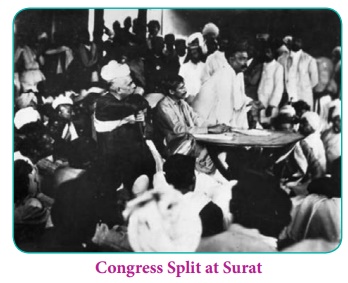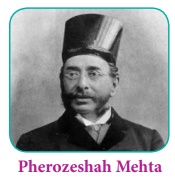Rise of Extremism and Swadeshi Movement | History - Militant Nationalism | 12th History : Chapter 2 : Rise of Extremism and Swadeshi Movement
Chapter: 12th History : Chapter 2 : Rise of Extremism and Swadeshi Movement
Militant Nationalism
Militant
Nationalism
As
pointed out earlier, thanks to the campaigns conducted by Lala Lajpat Rai, Bal
Gangadhar Tilak and Bipin Chandra Pal, often referred to as the Lal–Bal–Pal
triumvirate, Maharashtra, Bengal, Punjab, emerged as the epicentres of militant
nationalism during the Swadeshi phase. Aurobindo Ghose was another influential
figure in the militant leadership. The nationalism of this form was more
assertive compared to the early Indian nationalism.

Both the
groups, moderate and militant, were well aware of the evils or the wrong doings
of the British rule. The moderates, however, worked under the belief that the
British rule in India could be reformed by convincing the rulers through
representation and petitioning. The militant nationalist, on the other hand,
was of the opinion that the colonial rulers would never be amenable to reason,
as they would not like to give up the advantages of an empire.
Sometime around 1905, Aurobindo Ghose was asked by a man as to
how to become a patriot. In response Aurobindo pointed to a wall map of India,
and said “Do you see this map? It is not a map but the portrait of Bharat Mata:
its cities and mountains rivers and jungles form her physical body. All her
children are her nerves, large and small…. Concentrate on Bharat as a living
mother, worship her with nine-fold bhakti.”
Militant
nationalism also changed the nature of political pressure from the earlier
force of public opinion of educated Indians to the protesting masses. Despite
these changes, the militant nationalism phase retained a continuity from the
moderate phase. This continuity was evident in the inability to transcend the
peaceful method of struggle and for the most parts militant nationalism
remained tied to the idea of non-violence. However, they appealed to the
patriotic sentiments of the people using the religious symbols.
Swaraj or Political Independence
One of
the common goals of the militant leaders was to achieve Swaraj or Self Rule.
However, the leaders differed on the meaning of Swaraj. For Tilak, Swaraj was
restricted to the Indian control over the administration or rule by the
natives, but not total severance of relation with Britain. In Bipin Chandra
Pal’s view, Swaraj was the attainment of complete freedom from any foreign
rule.
The other
point of departure of the militants from the moderates was over the rising
extremism in Bengal, Punjab, and Maharashtra. Unlike the moderates, who were
critical of the reckless revolutionaries, militant nationalists were
sympathetic towards them. However, the political murders and individual acts of
terrorism were not approved of by the militant leaders and they were cautious
of associating themselves with the cause of revolutionaries.
The
patriotism glued with the assertion of Hindu beliefs was not acceptable to the
Muslims. Also much like their predecessors the leaders of the swadeshi movement
failed to penetrate the larger section of the society. By 1908 militant
nationalism was on the decline. The Surat split of 1907 was another
contributing factor to this decline.
Surat Split

The
tension between the militants and the moderates became more pronounced with the
appointment of Lord Minto as the new Viceroy to India in 1906. As the tension
was rising between the two groups, a split was avoided, in the 1906 Calcutta
session, by accepting demands of moderate leaders and electing Dadabhai Naoroji
as president. Most of the moderates, led by Pherozeshah Mehta, were defeated in
the election. The militants managed to pass four resolutions on Swadeshi,
Boycott, National Education, and Self-Government.

The next session of Congress was originally planned
to be held in Poona, considered to be a stronghold of the militants. Fearing
repeat of the Calcutta session, the moderates
shifted the venue to Surat. The militants proposed Lala Lajpat Rai’s name for
the next Congress presidency opposing the moderate’s candidate Rash Behari
Ghosh. Lala Lajpat Rai, however, turned down the offer to avoid the split. The
matter finally boiled down to the question of retaining the four resolutions
that were passed in the Calcutta session in 1906. The Pherozeshah Mehta group
sought removal of those items from the agenda. In order to counter Mehta’s
manoeuvering, the militants decided to oppose the election of Rash Behari Gosh
as president. The session ended in chaos.
The
Indian National Congress, born in December 1885, was now split into two groups –
militant and moderate. The Congress which emerged after the Surat split was
more loyal to the British than they were before. The new Congress, minus the
militants, came to be known as Mehta Congress and the 1908 session of the
Congress was attended only by the moderates who reiterated their loyalty to the
Raj. The politics of militants, on the other hand, could not crystallize into a
new political organization. The primary reason was the repressive measures of
the government by putting all the prominent leaders in jail.
Related Topics